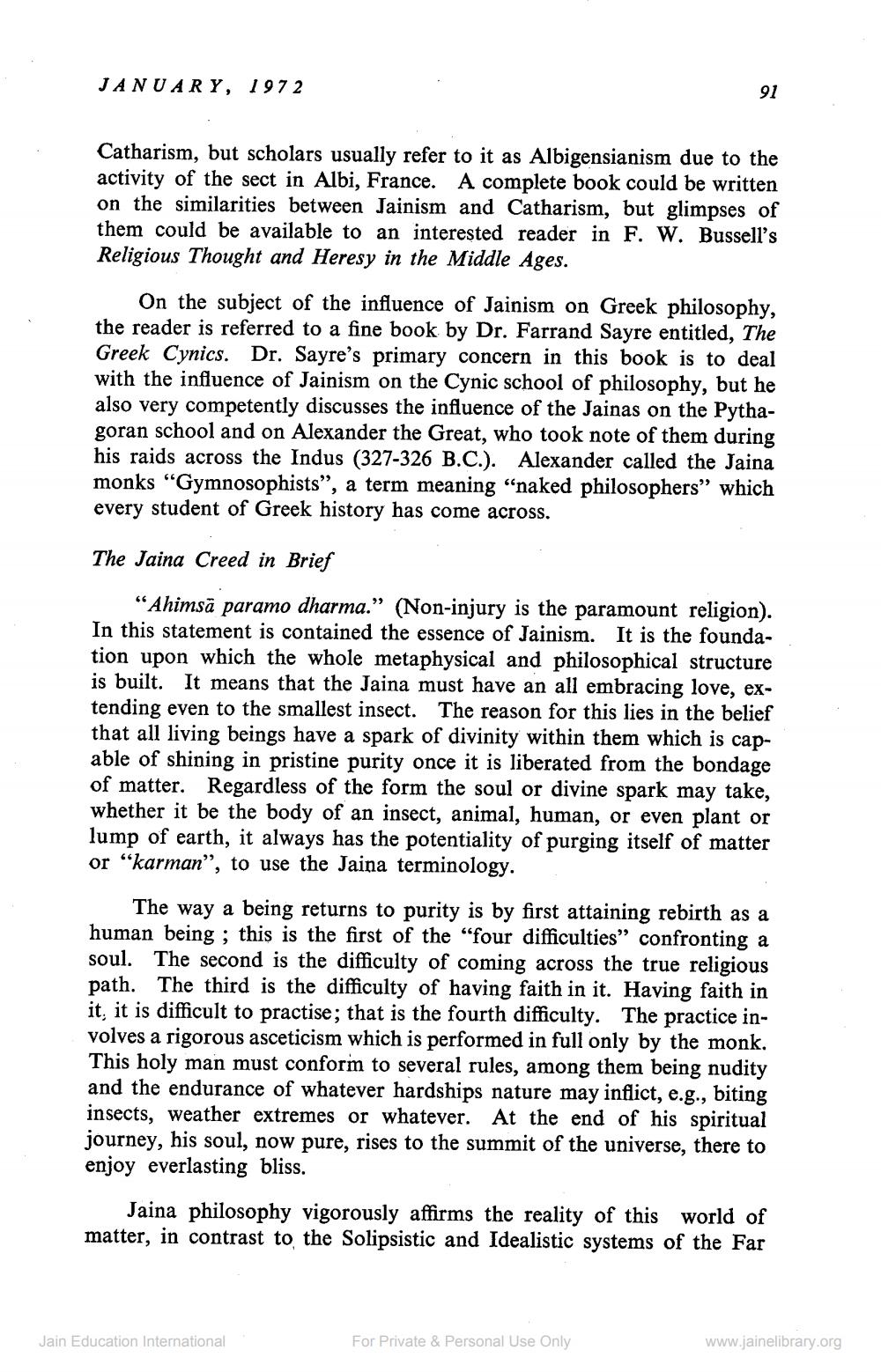________________
JANUARY, 1972
Catharism, but scholars usually refer to it as Albigensianism due to the activity of the sect in Albi, France. A complete book could be written on the similarities between Jainism and Catharism, but glimpses of them could be available to an interested reader in F. W. Bussell's Religious Thought and Heresy in the Middle Ages.
91
On the subject of the influence of Jainism on Greek philosophy, the reader is referred to a fine book by Dr. Farrand Sayre entitled, The Greek Cynics. Dr. Sayre's primary concern in this book is to deal with the influence of Jainism on the Cynic school of philosophy, but he also very competently discusses the influence of the Jainas on the Pythagoran school and on Alexander the Great, who took note of them during his raids across the Indus (327-326 B.C.). Alexander called the Jaina monks "Gymnosophists", a term meaning "naked philosophers" which every student of Greek history has come across.
The Jaina Creed in Brief
"Ahimsa paramo dharma." (Non-injury is the paramount religion). In this statement is contained the essence of Jainism. It is the foundation upon which the whole metaphysical and philosophical structure is built. It means that the Jaina must have an all embracing love, extending even to the smallest insect. The reason for this lies in the belief that all living beings have a spark of divinity within them which is capable of shining in pristine purity once it is liberated from the bondage of matter. Regardless of the form the soul or divine spark may take, whether it be the body of an insect, animal, human, or even plant or lump of earth, it always has the potentiality of purging itself of matter or "karman", to use the Jaina terminology.
The way a being returns to purity is by first attaining rebirth as a human being; this is the first of the "four difficulties" confronting a soul. The second is the difficulty of coming across the true religious path. The third is the difficulty of having faith in it. Having faith in it, it is difficult to practise; that is the fourth difficulty. The practice involves a rigorous asceticism which is performed in full only by the monk. This holy man must conform to several rules, among them being nudity and the endurance of whatever hardships nature may inflict, e.g., biting insects, weather extremes or whatever. At the end of his spiritual journey, his soul, now pure, rises to the summit of the universe, there to enjoy everlasting bliss.
Jaina philosophy vigorously affirms the reality of this world of matter, in contrast to the Solipsistic and Idealistic systems of the Far
Jain Education International
For Private & Personal Use Only
www.jainelibrary.org




